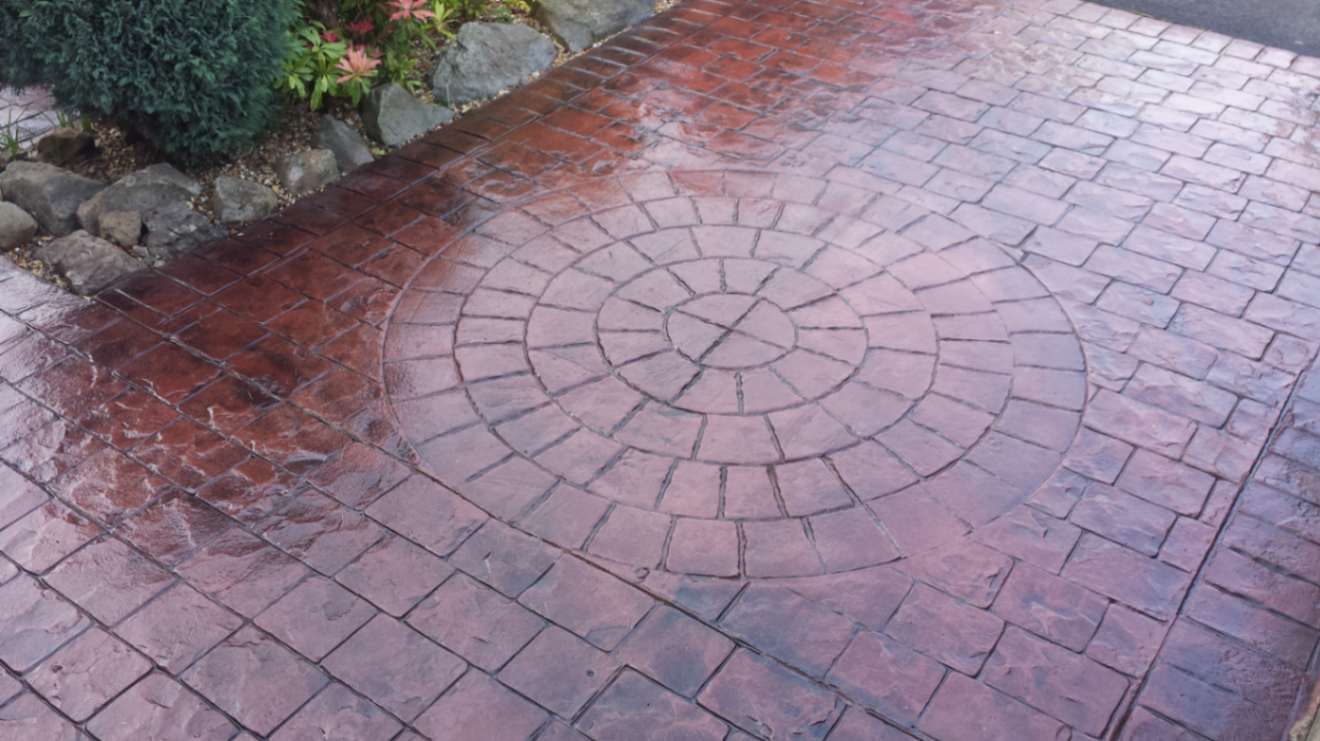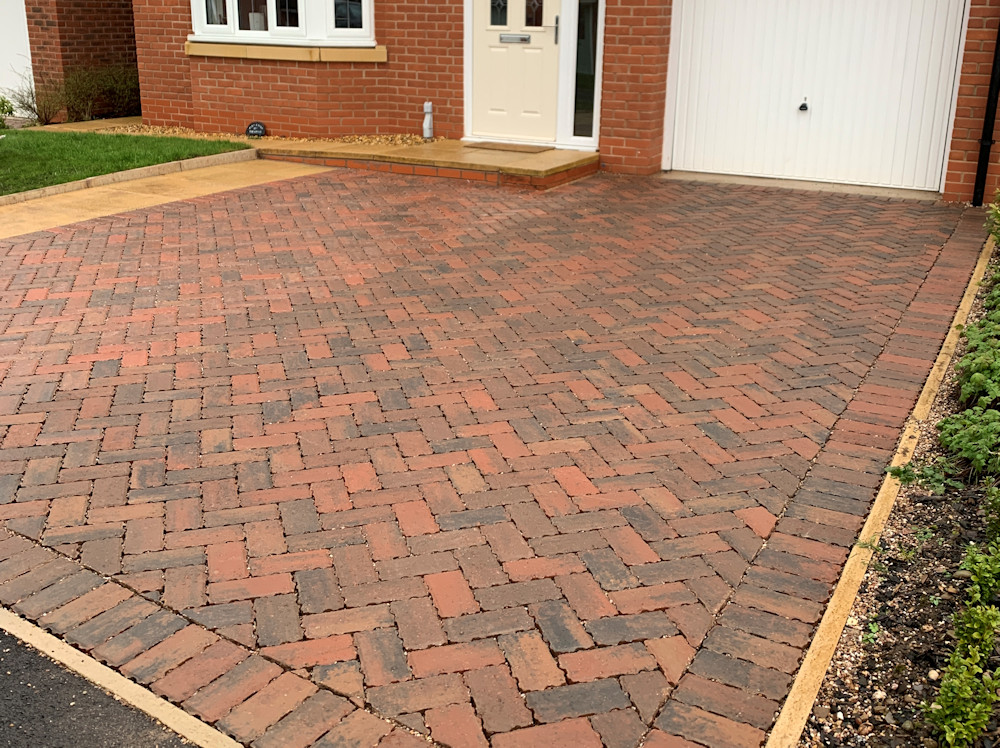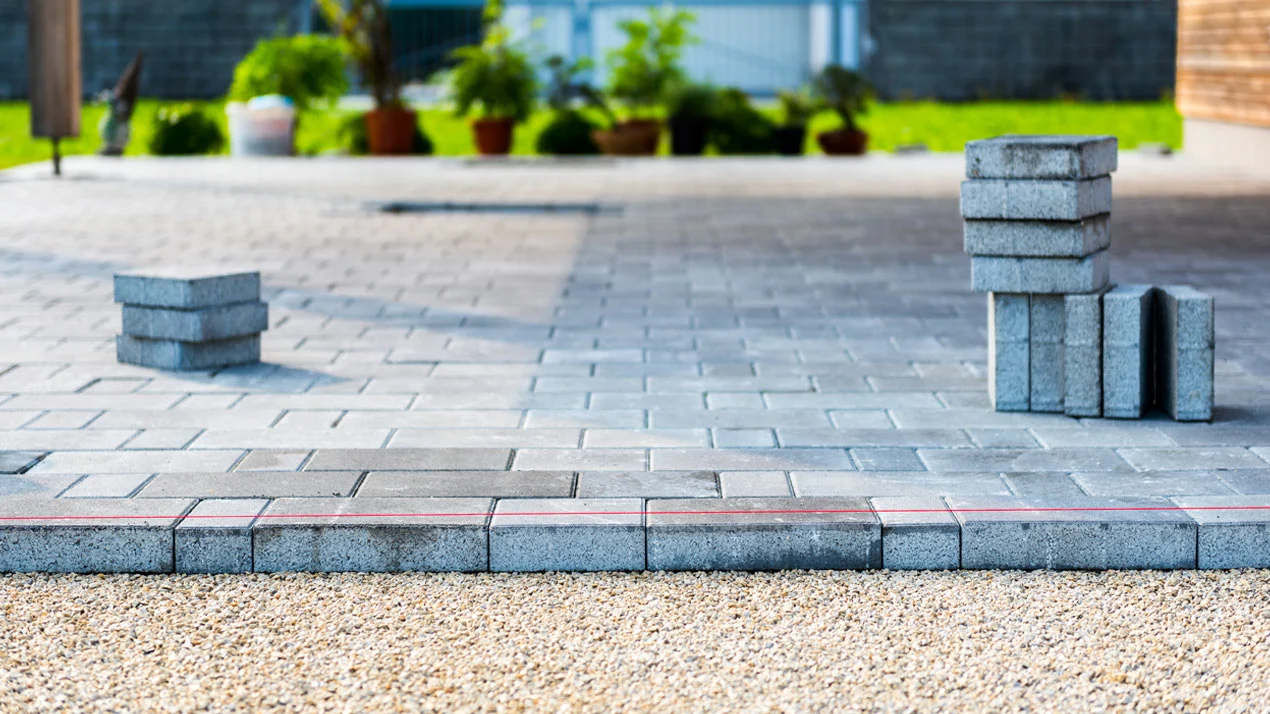It is a burning question that which driveway material should be chosen between imprinted concrete and blocked concrete. In this blog, we have tried to answer the question once and for all by explaining both types in detail. We have also explained their construction method, pros and cons in details. Read our blog till the end to make an informed decision.
What is Imprinted Concrete?
Imprinted or stamped concrete is not just surfacing with concrete, but, in fact, ornamental decorative one as well. It is created by forming a mould and pressing it on the wet concrete to create different patterns.
How to Construct Imprinted Concrete Driveways?
- Base Preparation:Stability, the way it is established with regular concrete, is achieved by putting down a sub-base.
- Concrete Pour:Concrete is poured and levelled on the sub-base.
- Colour and Sealer:A powder colouring is then applied on top to achieve the desired effect, and a hardener will make sure no change in the colour happens.
- Imprinting:Mould is pressed on the wet concrete to create the selected design on it.
- Finishing Touches:Concrete acquiring the desired colour and look is achieved through the application of a sealer once the concrete is cured. Such sealers serve to further bring out the looks as well as retards the surface from weathering.
What are the Pros and Cons of the Imprinted Concrete?
With the imprinted concrete being the favourite option among the designers, the surfaces can now be seen as attractive and durable for driveways, patios, walkways and the pool decks. It offers several advantages over other materials:
Pros
- Cost-effective:Unlike natural materials such as rock or bricks, stamped concrete tends to be a relatively cheaper option.
- Versatility:With a wide variety of patterns and colours available, you can achieve the desired look for your property.
- Durability:The fact that imprinted concrete is hard can mean that the life span of the surface can be longer if regular maintenance is performed.
- Slip Resistance:The rough surface offers adequate anti-skid properties.
Cons
- Susceptibility to Cracking: Just like any other concrete, the imprinted concrete can also get cracked during the freeze-thaw cycles or with inaccurate installation.
- Limited DIY Potential: Installing imprinted concrete is a professional undertaking which requires professionals who follow proper techniques that make it look good. Incorrect installation may lead to inadequate finish or even some structural problems.
- Maintenance Needs: The colour tends to fade in sunny conditions during the day. Routine maintenance needs to be carried out in order to maintain its aesthetics.
- Difficulty in Repair: Unlike materials such as pavers, as each piece is removable, imprinted concrete is a uniform slab. In some cases, fixing the cracks will mean the substitution of the entire area, which will be tedious and expensive.
What is the Cost of Imprinted concrete?
The cost of imprinted concrete varies depending on various things, like the size of the project, materials used, and labour.
Here’s a breakdown of the average cost of imprinted concrete:
- Materials: The cost of the materials for imprinted concrete would fall in the range of £370- £480 for a 40m2 surface and £880- £1200 for a 100m2 £1,762.50 is the median cost for materials.
- Labour: The labour cost of creating an imprinted concrete driveway will be between £2,625 and £5,500, depending on the size. The price is the labour cost per 40m2 area and 100m2 area, respectively.
- Cost per Square Metre: The cost of imprinted concrete is generally estimated at £75 to £90 per square meter, commonly. The average square meter price is £80.
Please note that those are average prices, and the actual cost of the project for you might depend on the design complexity, site preparation demand, and the hourly rate in your region.
Now we’ll discuss blocked concrete, its process, advantages and drawbacks.


What is Blocked Concrete?
Concrete blocks, made from a cement, sand, and gravel mixture, are commonly used in construction for walls, floors, and foundations and can serve as the foundation for residential or business complexes. Here is how they are made:
- Mixing: Ingredients like cement, sand, and gravel are measured in relation to the desired block quality. The water is added to the dry mixture to turn it into a paste. It can be done in a manufacturing facility.
- Moulding: The concrete mix is poured into moulds that define the size and shape of the final block. These moulds are vibrated slightly to eliminate air bubbles.
- Compaction: After filling the moulds, pressure is applied to compact the concrete further and improve its strength.
- Curing: It typically involves maintaining moisture and temperature to allow the concrete to harden and gain strength. Curing can take several days or weeks, depending on the block size and composition.
- Demoulding: Once cured, the concrete blocks are removed from the moulds and stacked for further drying and storage.
What are the Pros and Cons of the Blocked Concrete?
On the need and preferences, many people also consider blocked concrete for their driveways; here are some advantages and drawbacks of blocked concrete.
Pros
- Fire Resistance: Concrete is endowed with fire-resisting qualities, and hence, it is a perfect option for places where fire can be triggered.
- Insulation: The concrete block is a solid brick with a good property of insulation. This implies that it can maintain the right level of temperature in a building and lower energy costs. Hollow core blocks can be stuffed with insulation to improve energy efficiency.
- Versatility: Concrete blocks are available in different shapes and sizes. Thus, there are infinitely possible designs, such as straight, curved, or angled features, but in different lengths, widths and heights.
- Noise Reduction: The type of noise barrier that concrete walls provide is known as soundproofing. They are popular for separating the walls of quiet and noisy locations.
- Pest Resistance: Concrete will not become home for pests such as termites and mice, thus preventing any insect infestation.
Cons
- Weight: Concrete blocks, with their high bulk means that they are heavy materials, and the installation process is thus more labour-intensive than with lighter materials.
- Aesthetics: Sometimes, concrete blocks can even look simple with no colour remaining. Although there are also decorative finishes, it may not cover your design requirements.
- Thermal Mass: Although concrete may offer some insulation to warmth, it will also have significant thermal inertia. It means it sucks in and out heat in a relatively slow pace, thus causing discomfort in places that are either too cold or too hot. It is necessary to develop an adequate insulation solution to resolve the issue.
- Cracking: Concrete blocks placed in or around the slab can be subject to cracks due to building subsidence issues, temperature differences, or improper placement.
What is the cost of blocked concrete?
The cost of blocked concrete, also known as concrete blocks or concrete masonry units (CMUs), can vary based on the size of the blocks and labour charges.
Here’s cost estimation:
- Concrete Block Price: A standard concrete block measuring 100mm typically ranges in price from £2 to £3 per block.
- Concrete Block Wall Cost per Square Metre: For a concrete block wall with blocks that are 100 mm thick, the cost per square meter usually falls between £40 to £55. Additionally, labour charges are typically around £160 per day per person.
When considering the cost of a concrete block wall, it’s essential to factor in both the material cost and the labour charges.


Which is the Best Driveway Material?
When deciding between imprinted concrete and blocked concrete for your driveway or other surfaces, it’s crucial to weigh the advantages and drawbacks of each option carefully.
Imprinted concrete offers cost-effectiveness, versatility, and slip resistance but may require regular maintenance and can be susceptible to cracking.
On the other hand, blocked concrete provides fire resistance, insulation, and versatility in design but may be heavier and require additional finishing for aesthetic appeal.
Consider factors such as cost, durability, and aesthetic preferences to make an informed decision that suits your specific needs and preferences.
